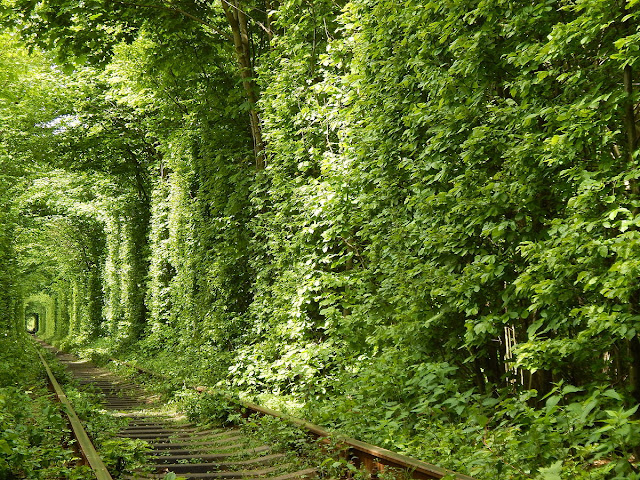From many years, tunnel of love Ukraine, is so famous on internet. The soft-hearted loving people captivate the beauty of tunnel in a few moments. They feel themselves to be there with loved ones. No doubt, the tunnel of love is so beautiful with several aspects. Tunnel of Love Ukraine is the name given by local people to this fairytale track. The lush green tunnel seems out of natural world, captured much attention, being a perfect photography spot.
The Tunnel of Love Ukraine runs a 3 to 5 km section of industrial railway located near Klevan, which is linking it with village Orzhiv. However, on the Kovel-Rivne line, the total length is seven kilometers. The majestic railway track is surrounded by green arches, which is famous for being a beloved place for couples to stroll in the middle of path. Trees with overhanging branches were left to grow freely around the line, thus, the passing train is the only thing, which is shaping its way through.
The green corridor is an industrial track for wooden work, fiberboard factory employed three times a day, but depending on how much plywood is to transport. The line is being at Klevan station and reaches the northern area of Orzhiv. The 4.9 km line is fully covered with dense forest out of whole line of 6.4km. However, tunnel of love stretches anywhere from 3 to 4.9 km, depending on how individuals count it. The gloomy atmosphere offers a degree of privacy and scariness. It is an ideal spot for selfies, wedding photos, for FB and Instagram depends on your perspective.
The local people were quite mystified when tourists abruptly started appearing in their one-street town and tramping along the railway line. The darkness provided a degree of privacy and the terrifying scenes offered a socially acceptable excuse for the physical contact at a time when public affection or even holding hands was considered inappropriate. In the earliest personifications, riders were taken by two-passenger boats via dark passages.
There were two major themes, a relaxing romantic ride motivating the couple to hold, or a spooky horror ride inspiring the couple to cling to one another and make a wish will get what they want. Before to go there, keep in mind, the tunnel has official protection or guardian. A nearby factory cut down many trees to widen the train passage which in result of huge outcry.
From all part of Ukraine, the birch trees are trucked into the Odak factory. Then they are turned into finished plywood panels. After that they are loaded onto large containers and hauled by trains to the Klevan railway junction. Hence, at Klevan the goods are taken along the main trunk line to markets across West Europe.
The tunnel ever growing popularity, new wedding couples prefer to make a photoshoot there. Thus, visitors are creating more problems for train operators in managing the speed and control. Although, there is no major incident took place here, but a 38-year-old lady was struck by train, fracturing her hip.
The best time to go tunnel of live is end of spring and early part of summer. In this time, the greenery looks fresh, not too dry or yellowish. However, in the autumn you can enjoy the golden autumnal colors, look gorgeous. Also, in winter the you can capture a perfect winter wonderland. In the end, you might be thinking before to go there. Is the Tunnel of Love Ukraine is live up to expectation? The short answer is off course “Yes”.



























































